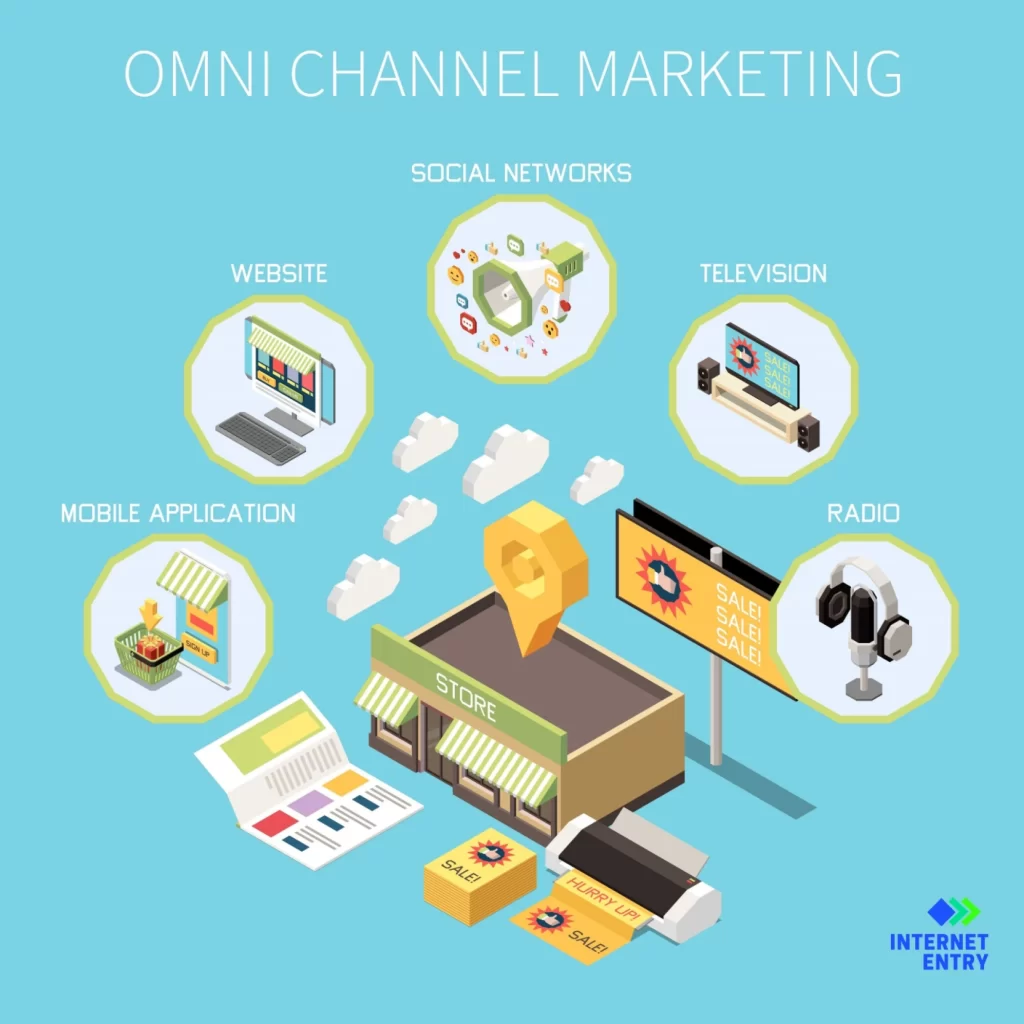The omnichannel marketing process is profitable because it allows companies to understand which channels are more effective in generating conversions, as well as which channels need to be improved. It also helps companies understand what their customers want and how they want to interact with them.
The first step in understanding the profitability of omnichannel tracking is knowing what it entails. Omnichannel tracking is when a company measures the engagement and conversion rates for each channel that a customer interacts with. This Omni channel process allows companies to know which channels are more effective at generating conversions, as well as which channels need improvement. It also helps companies understand what their customers want and how they want to interact with them.
Omni channel means to use all channels to reach out to the customer with the same message.
What is Omnichannel Marketing (OCM)?
Omnichannel tracking is the process of measuring the engagement and conversion rates for each channel that a customer interacts with.
The term “omnichannel” is the newest development in the marketing world. It combines every channel a business employs to communicate with customers and deliver goods and services. Online, offline, telephone, television, and even billboards are included in this.
How is Omnichannel different from multichannel?
Omnichannel is a relatively new marketing term that refers to the integration of all customer touchpoints into one seamless experience whereas multichannel is the use of multiple marketing channels for reaching and engaging with customers, such as through email, and social media or direct mail.
In a way of comparison to multichannel, which only focuses on using various channels to reach customers, the omnichannel tracking strategy relies on delivering an integrated experience across all customer interactions.
Benefits of using an Omnichannel strategy
Omnichannel strategy is more effective for businesses to use one platform to carry out their marketing campaigns across multiple channels, and this is one of the advantages of an omnichannel strategy. Furthermore, it improves the customer experience by allowing them to purchase their goods and services from any location they select, whether online or in a physical store.
Benefits of omnichannel for retailers:
- Achieve more availability,
- Drive sales
- Drive traffic
- Integrate digital touchpoints
- Improves customer experience
- Generate more revenue
- Reduced Customer Acquisition Cost (CAC)
- Building a cohesive and consistent brand identity
Improved customer experience
By integrating multiple channels into a single system, omnichannel customer service aims to provide an effective customer experience across multiple channels.
Since omnichannel tracking strategies focus on the different people’s experiences among different devices instead of the channel, the customer experience (CX) is amazingly better.
Companies can make more sales and get better retention rates by just focusing on the customer instead of the platform.
Building a cohesive and consistent brand identity
Brand identity is a term that can be defined as the degree to which a brand is recognized by consumers. You can easily recognize your brand’s image and tone by developing an amazing strategy across all of your different channels. Organizations should base this image on the needs and values of their core audiences.
Your brand strategy will be more thorough if you concentrate on the overall experience and use your brand guidelines to target each channel. This will result in greater loyalty and more precise messaging.
Building a cohesive and consistent brand identity is important to increase brand awareness because it helps marketers understand how well their marketing efforts are working and how consumers perceive their brands.
Greater revenue generated
The lifetime value of omnichannel shoppers is 30% higher than that of one-channel-only shoppers. Google’s annual revenue has been increased by 9.5 percent for businesses with extremely high omnichannel customer engagement compared to 3.4 percent for businesses with low omnichannel engagement.
Reduced Customer Acquisition Cost (CAC)
The term “omnichannel reduced customer acquisition cost” (CAC) is used in marketing to describe the price differential between acquiring new customers through offline and online channels.
In marketing, the phrase is used to describe conditions in which acquiring new customers through a particular channel is more affordable. For instance, if a business invests $100 in print advertising and generates 10 sales, its CAC would be $10 per client. If they invest $100 in online advertising and generate 10 sales, their CAC will be $2 per client.
Tracking the customer journey: How to leverage Omnichannel Marketing?
The goal of omnichannel marketing is to bring together all aspects of customer experience for a unified brand experience.
This can be done by integrating different channels such as email, web chat or live chat, social media, and telephone into a single platform or website interface. It also includes synchronizing content across different platforms
Wondering how to use your data to improve the shopping experience?
Let us find out more about mapping customer journeys to create more targeted campaigns and understanding Omnichannel eCommerce
Analyzing sales over time
An increase in sales over time is one of the most basic indicators of the success of your omnichannel marketing strategy. Remember that the sales volume can be influenced by a variety of factors such as seasonality, new product lines, online store redesigns, and so on, but it’s a good starting point to see if you’re on the right track.
Measuring customer satisfaction
Measuring Customer satisfaction is one of those most important metrics that often ends up with a thing like, “Well, are my customers happy?” without having a real system in place to measure it. Anyways, one of the most important things to consider in an omnichannel strategy is improved customer experience, so it is essential to measure the satisfaction of the customer as you test and scale on them. However, because improved customer experience is one of the most important considerations in an omnichannel strategy, it’s critical to measure satisfaction as you test and scale.
Following email interactions
Following email interactions is a new way to ensure that you do not miss any potential leads.
Many businesses have started to follow up with potential leads via email. This is achieved by following up with customers after they have made a purchase, visited the website, or even opened an email. The goal of this method is to ensure that no opportunities to convert a lead into a customer are missed.
The main advantage of following email interactions is that it can be used for a variety of purposes. A company may want to use it to increase sales, retain customers, or simply raise brand awareness.
Evaluating brand awareness
It is very important for businesses to develop a brand identity. Leveraging brand tracking tools can really help to measure and predict your brand’s worth in the minds of the consumers.
Omnichannel commerce is all about being where your customers are, so it should help build your brand a good profile. Indicators such as direct website traffic and social followers show that the people know about your brand and are actively searching for your brand.
Checking customer retention
Customer retention metrics are variables or factors used to assess the likelihood of retaining and attracting customers to your company.
- Customer churn rate (CCR) is the percentage of customers lost over a given time period.
- Customer Retention Rate (CRR) represents the percentage of clients retained by your company over time.
The number of customers retained in a given time period compared to a previous time period indicates how successful you are at customer retention, and thus how well your omnichannel solutions work.
Assessing conversion rates
The average landing page conversion rate across industries is 2.35 percent, but the top 25% convert at 5.31 percent or higher.
Tools for assessing conversion rates:
- Google Analytics
- eCommerce analytics
Goal tracking in Google Analytics can be used to define and track user actions that lead to conversions, such as product catalogue downloads, online registration, and so on. You want to see an increase in the percentage of users who take action and then buy something over time.
eCommerce analytics has Built-in analytics tools on eCommerce platforms like Shopify and B2B eCommerce platforms like TradeGecko can provide a wealth of data on issues like cart abandonment, and extensions to enable automated cart abandonment follow-up emails are available.
Recognizing changing customer habits
The retail industry has undergone numerous changes in recent years. Customers are increasingly looking for options other than a physical store to purchase their goods. They want the ability to shop from their phone, at work, or even on social media. This shift in customer behaviour has increased the use of omnichannel tracking.
The process of tracking customers’ shopping behaviour across all channels and devices they use, including online, mobile, and in-store purchases, is known as omnichannel tracking. It enables retailers to gain insights into what their customers are looking for and what they are purchasing in order to better meet their needs.
Conclusion
Omnichannel marketing is a marketing strategy that uses multiple channels to reach out to customers.
Omnichannel marketing is a strategy which combines online and offline channels to market products and services. OCM is based on the idea that customers interact with businesses in several ways, including online, mobile, social media, in-person and through more traditional channels. Omnichannel marketing means using all those channels to reach out to the customer with the same message.
The use of digital and physical channels to provide an integrated customer experience across all points of contact is known as omnichannel marketing. It encompasses the use of mobile devices, social networks, websites, call centres, and retail store kiosks.
Omnichannel has become an essential component of most organisations and for business strategies, because it enables them to:
- Increase customer satisfaction by providing more consistent and personalised interactions across different channels.
- Increase sales by making products and services easier to find for customers
- Save money by eliminating redundant marketing efforts across different channels.
Businesses can use an omnichannel strategy to optimize stock levels and develop smarter replenishment practices. Marketers have witnessed a 250% higher engagement rate with omnichannel marketing strategy than those who use single-channel marketing. Get in touch with Internet Entry’s expert marketers for a free consultation.
Citation – An Omni Channel Salesforce – ADSDataDirectTeam – September 23, 2022
Image Credit – Image by macrovector on Freepik

